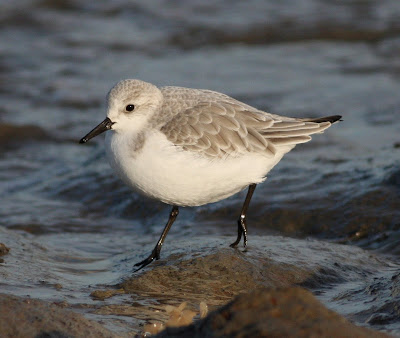
Amity and I headed back up on Christmas Eve for a couple of days with the family, and a beautiful scene awaited us; deep, deep snow, temperatures well below zero, and a starry moonlit night in the village.
Arriving at Ma's place after dark, two Woodcocks together on the illuminated snow on the adjoining playing field turned out to be the vanguard of an amazing presence of this species, the most I've ever seen by some distance.






Birding on Christmas Day was confined to the small back garden, but with the added benefit of not having to leave the kitchen table. With always well-attended feeders providing plenty of entertainment, over the course of a couple of days, thirty species utilised the few square metres of sanctuary and shelter, the pick of being at least two Bramblings, several Woodcocks, Stock Doves, Coal Tits, Tawny Owls, and the ubiquitous mobs of Tree Sparrows (with up to 30 of the latter present at any given time).



Woodcocks numbered at least seven in the immediate area, with birds under pretty much every single shrub, where small areas of exposed ground afforded feeding opportunities.
A few hours out on a beautifully clear, still and blue-skied Boxing Day incorporated South Landing, Beacon Hill and Danes Dyke South, with plenty of winter-themed birdlife. South Landing beach (a small bay on the south of the headland) was loaded with waders - numerous Dunlins, Ringed Plovers, Curlews and Redshanks were joined by three Golden Plovers, six Grey Plovers, 12 Sanderlings and five Bar-tailed Godwits, all allowing close views.







The snow-covered cliff slippage along the beach hosted (as well as Rock Pipits, Song Thrushes etc) a wonderfully accomodating Barn Owl, which hunted for a good twenty minutes alongside and above us.









Beacon Hill and neighbouring cliff-top fields were buried in deep snow, but Danes Dyke South (the southern third of the wooded neolithic gulley which divides the head from the 'mainland') was full of life, including Roe Deer, Fox and Stoat, and plenty of birds - the highlight being a very minimum of twenty Woodcocks, exploding out of almost every small sheltered spot.
Bleak, dull skies and a brisk westerly on the 27th, but a chance to spend an hour or so around the field behind the fog station and along Bluethroat Dyke. Again, lots of activity; a large passerine flock faithful to small area of exposed wild bird crop by the cliff edge contained about 35 Reed Buntings, 15 Yellowhammers, 15 Tree Sparrows, 25 Skylarks, and a single Snow Bunting.



Plenty of Lapwings, Curlews, four Woodcocks (of course), two Common Snipe, and a handfuls of fly-by Wigeon and Red-throated Divers were also recorded; not a bad hour's walk with the family. By the latter part of the day, rising temperatures and rain seemed to have signalled the end of the big freeze, implying diminishing returns back on patch in Hackney....

























